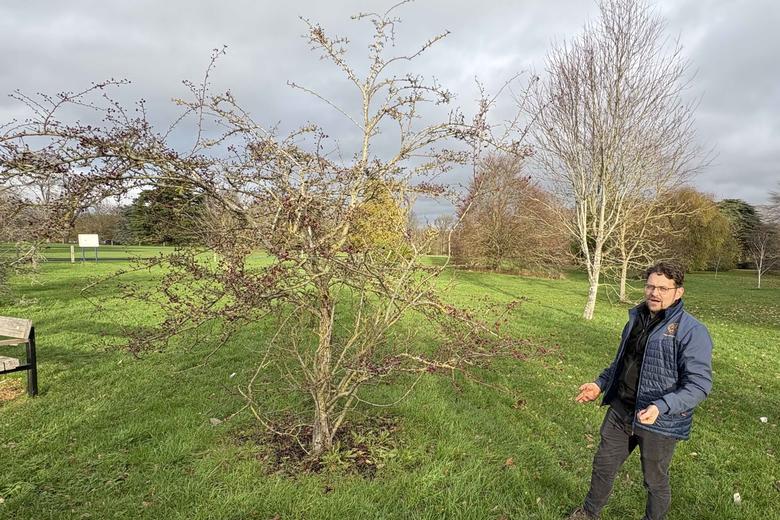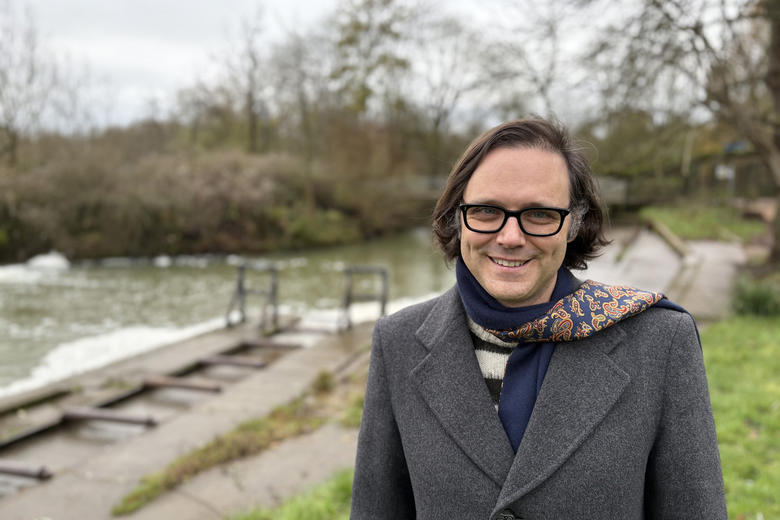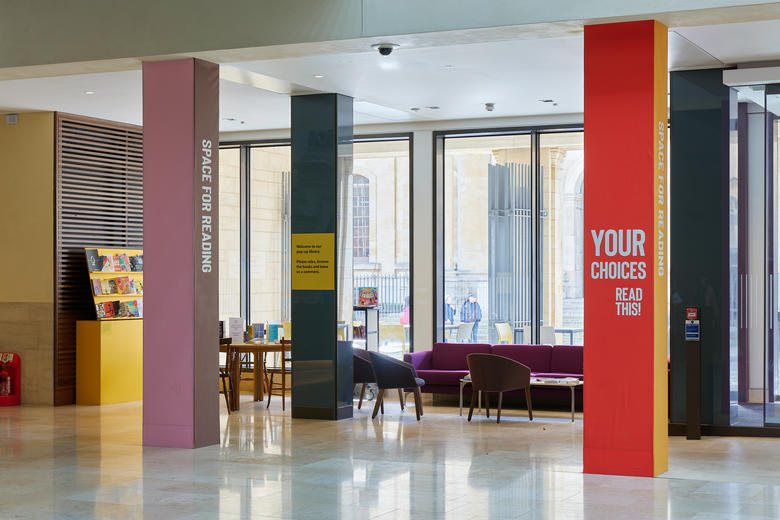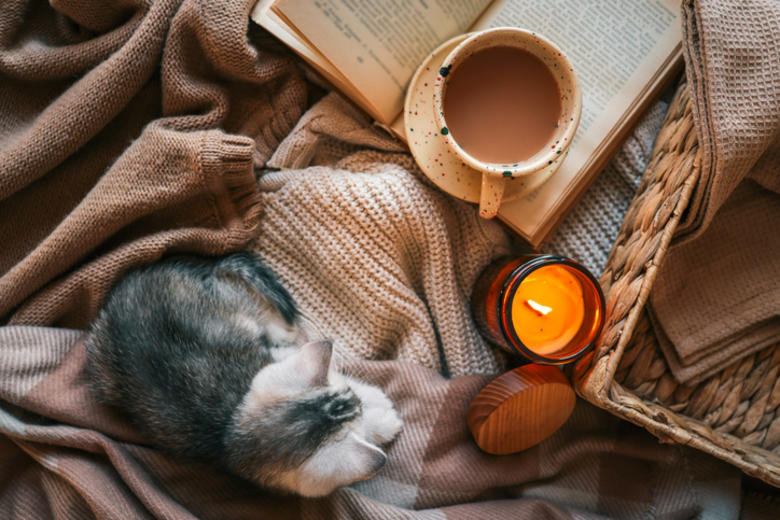ANSELM KIEFER AT THE ASHMOLEAN

ANSELM KIEFER AT THE ASHMOLEAN
The Ashmolean hosts an extraordinary exhibition at a terrifying moment
Published: 18 February 2025
Author: Richard Lofthouse
Share this article

In his 80th year, the German artist Anselm Kiefer (pictured right, in his studio) is a monument of post-1945 art but not well known in the UK. It is a huge achievement of the Ashmolean Museum to host this major exhibition of Kiefer’s earliest works in 2025, proving an uncanny ability to call the timing and power of art to move us where global news headlines can progress no further.
The exhibition consists of a group of 45 early works made during the period 1969–82, and features paintings, watercolours, artist books, photos and woodcuts, rarely displayed in the UK before.
It is deeply ironic and apposite, all at once, to enter the exhibition and be confronted with a larger than life-size self-portrait of the artist wearing his father’s Wehrmacht greatcoat, dusted off from the loft in the late sixties and accompanied by a sieg heil Hitler salute.
Ashmolean Director Xa Sturgis describes this work and what follows as ‘jaw dropping and shocking, particularly urgent and relevant.’
That was an understatement even on the day journalists were treated to a preview, Tuesday February 11, given that later the same week the world would learn that President Trump had already spoken at length to Russia’s Putin and in some sense thrown Ukraine and Europe under a tank – howsoever we wish to debate the broader and finer meaning of whatever that will mean in the rest of 2025 and beyond.
The exhibition opened to the public on Friday February 14th and runs until mid-June. It should almost be a civic duty to attend.
But what ‘it’ might ‘mean’ will be an individual, and no doubt complex, plural response.
The exhibition curator Lena Fritsch, a German, spoke to journalists of the utmost relevance of the theme of ‘not forgetting the past’ just a fortnight before elections were due in Germany, dominated by a resurgent populist right.

Kiefer said, in relation to his provocative sieg heil stunts (he produced a whole book of them, shown left): ‘If we don’t remember what we have done, we will do the same thing again.’ His comment is reproduced as you begin the exhibition. It could not be a more explicit warning.
But to go any further with the exhibition requires putting to one side current affairs and more recent trans-Atlantic echoes of the sieg heil even while accepting that walking into a sieg heil is shocking.
Kiefer was grappling with his own parents’ generation: what did they do in Hitler’s war, how could they forget? What would we do, faced with the same circumstances? Keep your head down or risk your neck? There are no easy answers but the exhibition is an enormous weight of German angst worn heavily. It is a blackened brick, in your face. It is bowed down with meanings.
What’s left for art? That’s the enormous question that governs most German art in the twentieth-century, or at least since it was semi-ruined by poisonous appropriation by the Nazis. In some canvases Kiefer insists on reproducing snatches of poetry across the painting. In others we get a ghostly outline of an artists’ palette hovering ghost-like on top of some dreadful scene of war. In others we get a very heavy-handed dedication to his wife or new-born son, plonked across the sky in a sky or a lake. You’re left scratching your head. It looks like an act of self-vandalism, or clodding amateurism. But that’s the whole, tortuous point: what role for art, for the artist, after the end of art and Nazi perversion?
The single work most appropriate for marketing this exhibition to a banal public who might have just tumbled out of nearby burger operation Five Guys, is a simple little painting of a wood, and you think: OK, that’s nice enough. I like trees.
The title is simply Wald (Forest), 1973-4 (the image this piece has led with). But it represents a vast trove of meanings. The paint is light – it is a watercolour, this one. But the trees are black and it is cold, wintry. You have to choose what it means to you. The catalogue offers a gamut of German forest ideologies including the fact that the Nazis dialled the wood-as-German-place-of-deep-meaning up to eleven. Balance that with the fact that Kiefer by then lived in a pretty, mountainous, part-wooded landscape around Odenwald. It is simultaneously all the woods of German history and imagination, and a wood he lived near and painted. It might be a mass grave and a place of horror. It might be a place of renewal.
The exhibition is its own context. There is a still life of a jug, a loaf of bread and an apple. Atop, the words, in English: ‘Still life is Exciting’. Painted in 1974, it would appear to be a kitsch rip-off of a mid-sixties US magazine of the same title and similar imagery. Black comedy. Or maybe he means it.
In one painting, Untitled (U-Boat), 1973 Kiefer uses a German expressionist technique – think heavy swirling paint - to reproduce a Nazi propaganda post-card celebrating the destruction of allied shipping by a U-Boat wolf pack. The ambivalence of Kiefer’s treatment is that he makes it more colourful and more exaggerated, almost to turn it into a completely imagined fiction, to focus perhaps on the artificial quality of all propaganda.
As you progress into the main hall you begin to encounter massive, monumental works dominated by black straggly lines, a cat’s cradle of Nordic myths and other layered meaning. It’s not everyone’s cup of tea and its certainly not aesthetically attractive in any conventional sense. That’s the charge against Kiefer and his generation, that they couldn’t overcome the enormity of the recent German past; that it had destroyed art. But it’s also the charge against modern German art rooted in the late nineteenth century, that beauty was typically expressed as ‘ugliness’.

But you are rewarded by trying. For this reviewer the painting that moved him was Ride to the Vistula (1980-81) (Shown, above). Germany triggered World War Two when troops crossed the Vistula River into Poland in 1939. There is a further literary reference within the title. Forget all that. The Polish military were still only partly mechanised, with cavalry, a suicide mission against the mechanised Wehrmacht. The horse’s head is depicted with frenzied impasto, so black that it still glistens and shines, as if with sweat just shed, and around the eye of the horse there is a huge force of emotion, paint left to drip like blood, drying in place like a carcass. It is simply extraordinary. All of Europe’s tortured past and present is captured in that impassioned representation. Go and see it now.
ANSELM KIEFER EARLY WORKS
14 February–15 June 2025
Venue: John Sainsbury Exhibition Galleries, Floor 3, Ashmolean Museum, Beaumont Street, Oxford OX1 2PH Open: Daily, 10:00–17:00 Admission: £8.10–£18.00, tickets available at the Museum or online Catalogue: £25.00, available at the Museum or online*
CREDITS Anselm Kiefer: Early Works is presented in partnership with: The exhibition is supported by: White Cube The Patrons of the Ashmolean















